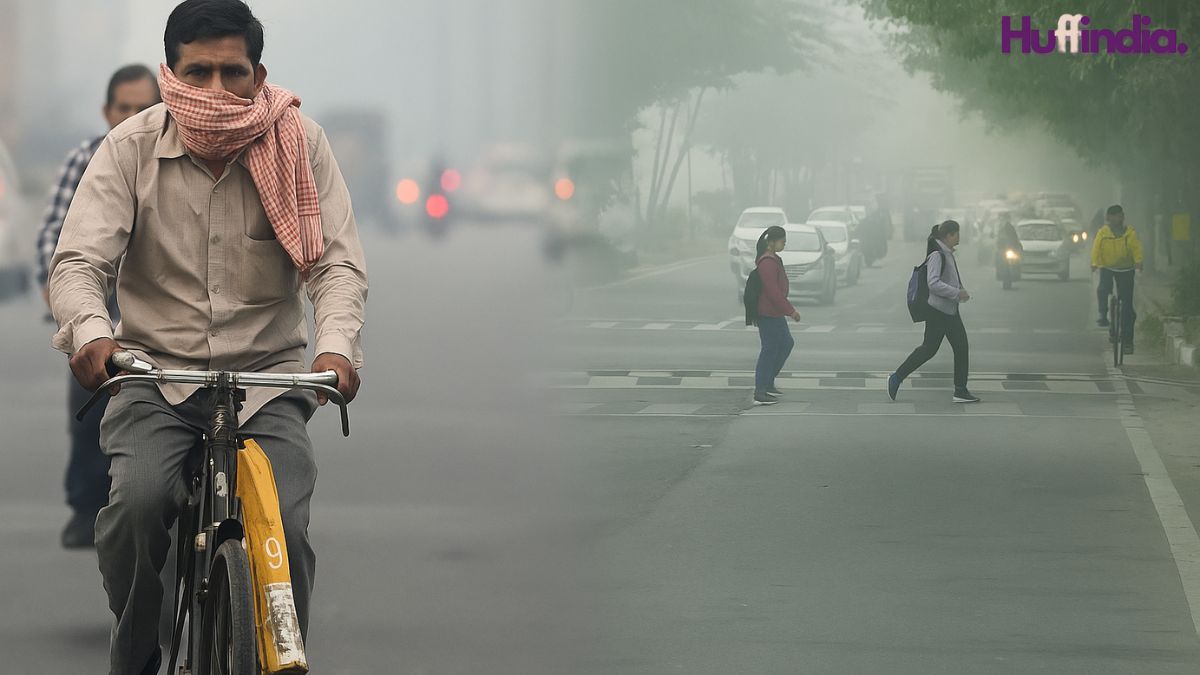Delhi-NCR air quality today deteriorated sharply on Saturday, pushing large parts of the region into the “hazardous” and “severe-plus” categories. The Air Quality Index (AQI) breached 447 early in the morning, with several monitoring stations across Delhi, Noida, Ghaziabad and Gurgaon crossing the 500 mark — the highest measurable pollution band.
According to the latest data compiled from multiple weather and pollution monitoring agencies, dense smog settled over the region overnight due to a combination of stagnant winds, plummeting temperatures and a high concentration of particulate matter. Visibility dropped significantly across arterial roads, further slowing traffic and creating health risks for millions of residents.
Multiple reports confirm the severity of the situation. An IANS analysis noted that several pollution hotspots clocked AQI readings above 500, indicating severe-plus air quality that can impact even healthy individuals.
Meanwhile, a separate India Today report highlighted minor fluctuations across some monitoring points, where the average AQI hovered around 359, still categorised as “very poor”, showing the uneven spread of pollution but reinforcing the broader crisis.
Source: https://www.indiatoday.in/cities/delhi/story/delhi-aqi-359-air-quality-very-poor-category-2824151-2025-11-22
The Indian Express noted that PM2.5 concentrations reached nearly 312 µg/m³, while PM10 settled around 422 µg/m³, far exceeding the World Health Organization’s recommended safe limits of 15 µg/m³ for PM2.5 and 45 µg/m³ for PM10.
Source: https://indianexpress.com/article/cities/delhi/delhi-aqi-level-today-november-22-air-pollution-level-noida-gurgaon-10379474/
What’s causing the hazardous spike?
Experts attribute the toxic rise in pollution to a combination of short-term and long-term factors:
1. Meteorological conditions
- Low wind speed
- Temperature inversion trapping pollutants
- Dense early morning fog mixing with smoke and dust
2. Vehicular and industrial emissions
The region continues to record high traffic density even during advisory periods, adding to wintertime industrial emissions and contributing to thick smog formation.
3. Construction dust and suspended particles
Despite GRAP restrictions, reports indicate ongoing construction in certain pockets, adding further dust to the atmosphere.
4. Residual seasonal farm fires
Although stubble burning has reduced compared with previous years, residue plumes from neighbouring states still contribute to Delhi’s pollution load during wind stagnation phases.
Health impact and official advisories
Doctors across NCR have noted a sharp rise in the number of people reporting symptoms such as breathlessness, coughing, headaches and eye irritation. Those with asthma, bronchitis and heart ailments are at significantly higher risk.
The Commission for Air Quality Management (CAQM) has activated Stage III of the Graded Response Action Plan (GRAP), leading to:
- Restrictions on construction and demolition
- Reduced industrial operations
- Curbs on outdoor sports activities in schools
- Strong advisories to avoid prolonged outdoor exposure
Authorities have urged residents to use N95 masks, employ air purifiers indoors and avoid early morning outdoor workouts.
Long-term concerns
Environmental experts warn that if Delhi-NCR continues to experience recurrent pollution spikes, the region may face severe long-term consequences, including declining life expectancy and increasing public-health costs. A recent global analysis placed Delhi among the world’s most polluted large cities for over a decade.
Related: Winter COVID Spike 2025: Govt Issues New Advisory
Related: Delhi Cloud Seeding Fails: Minimal Rain, PM2.5 Drops 10%
























